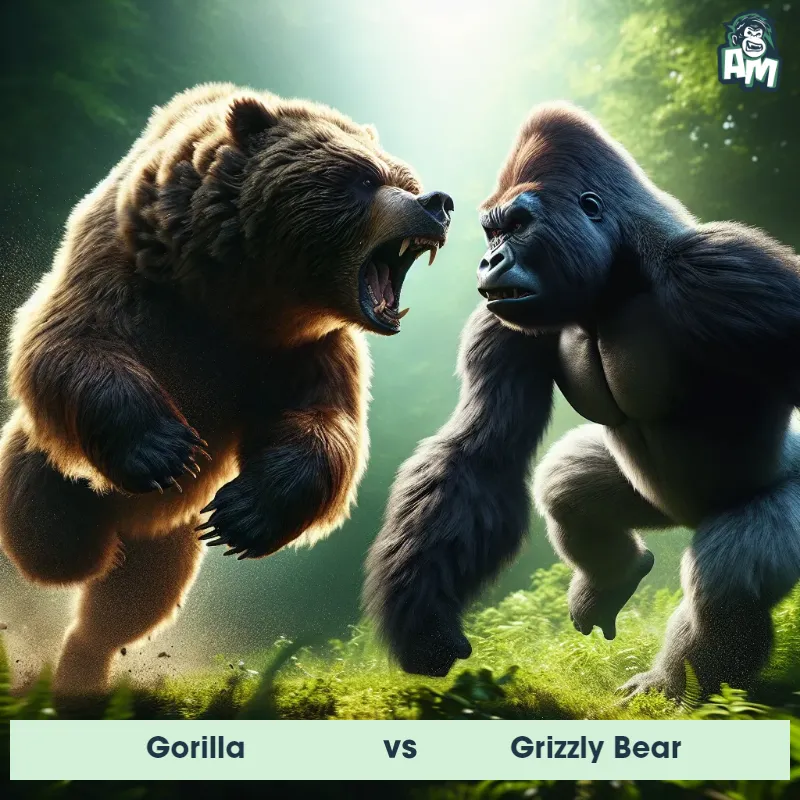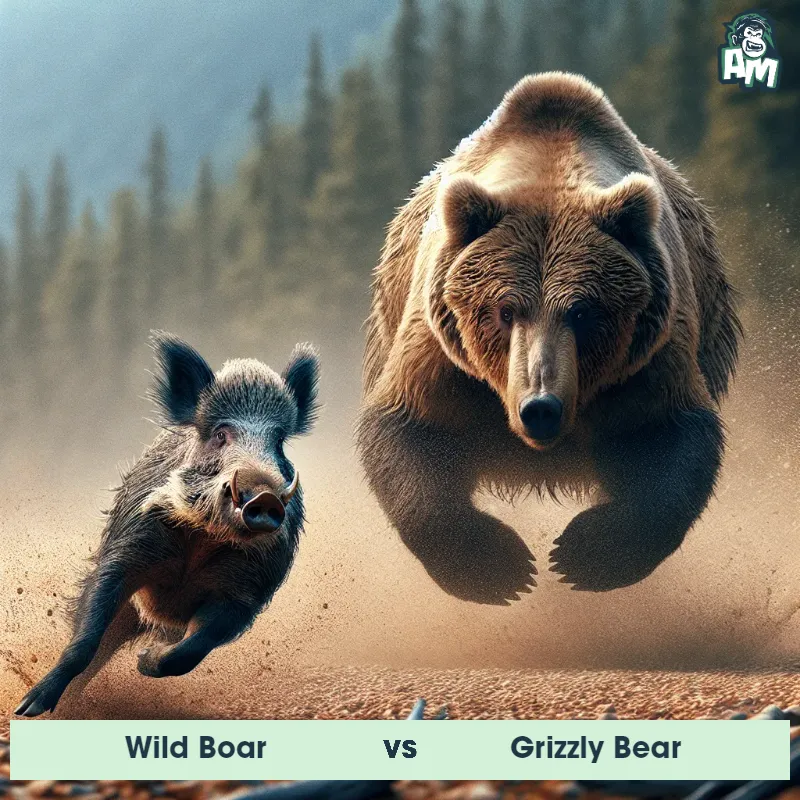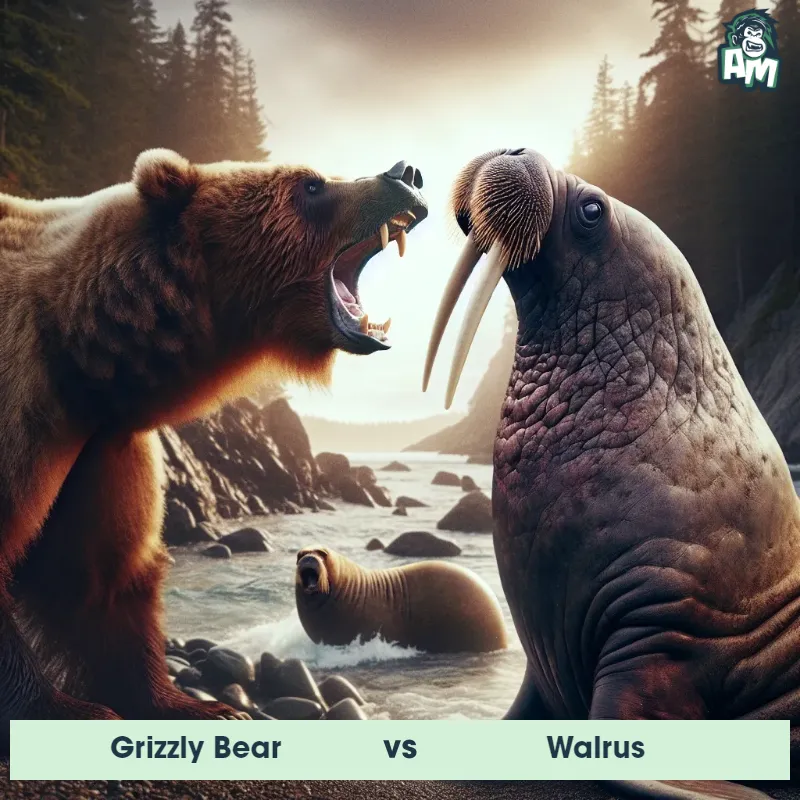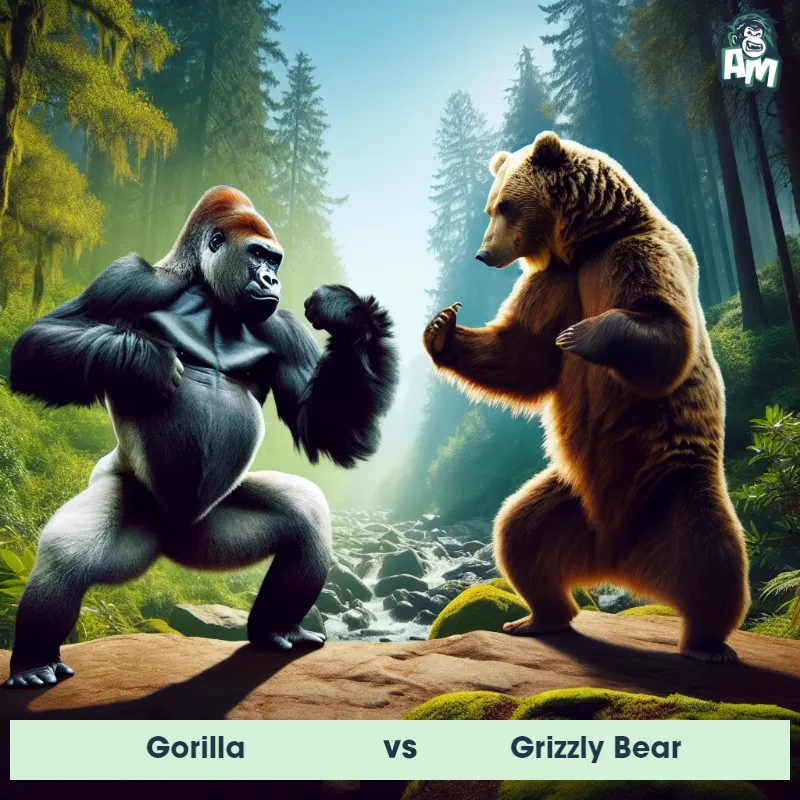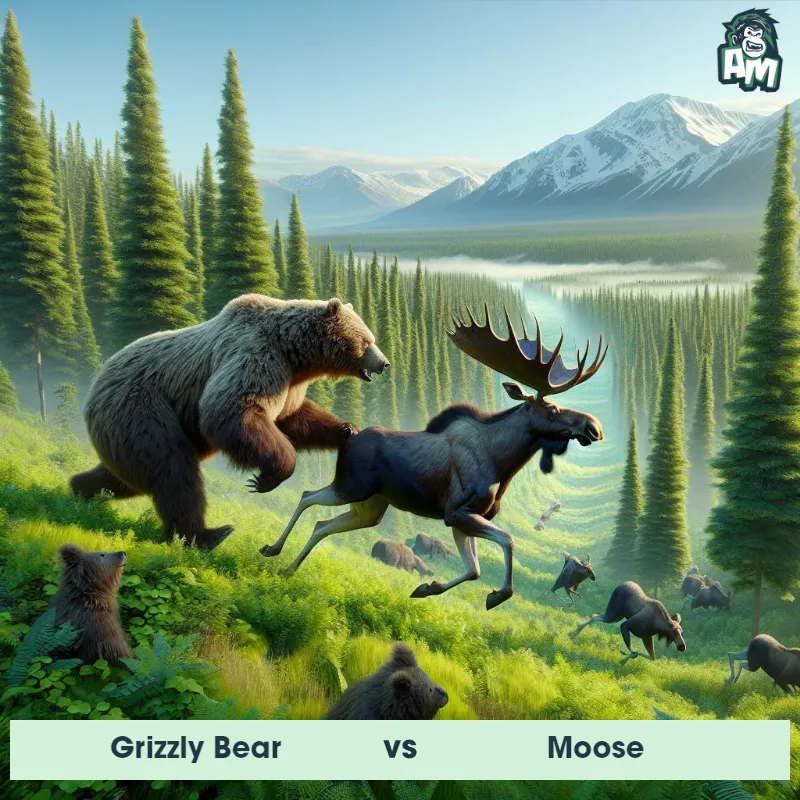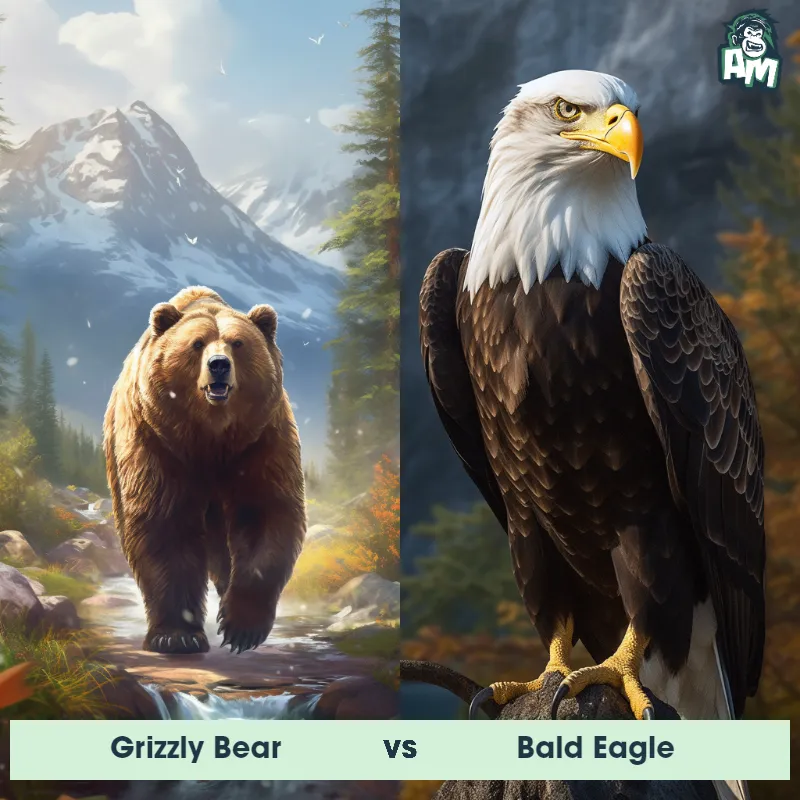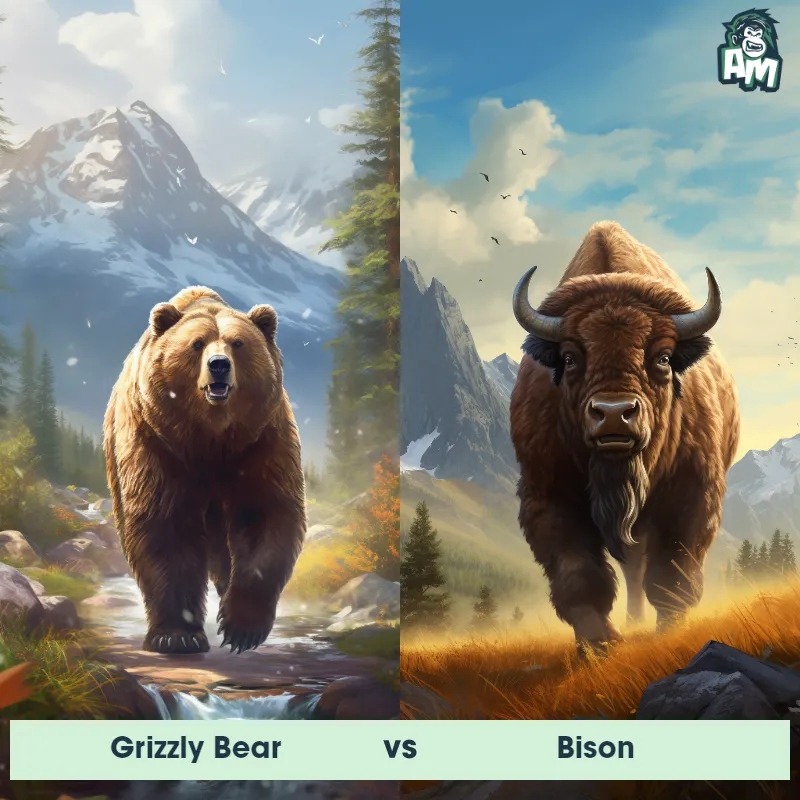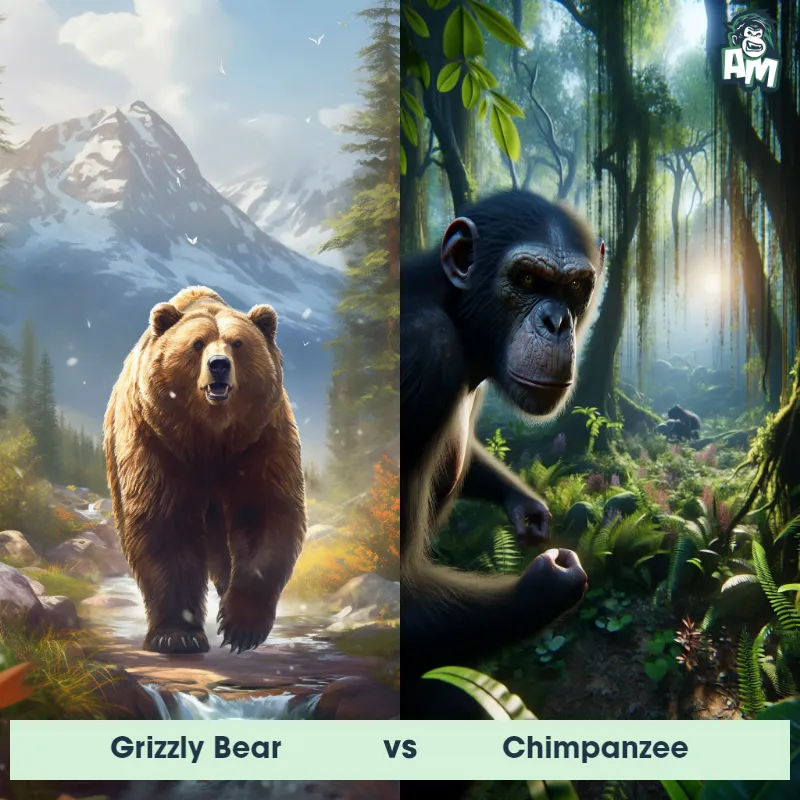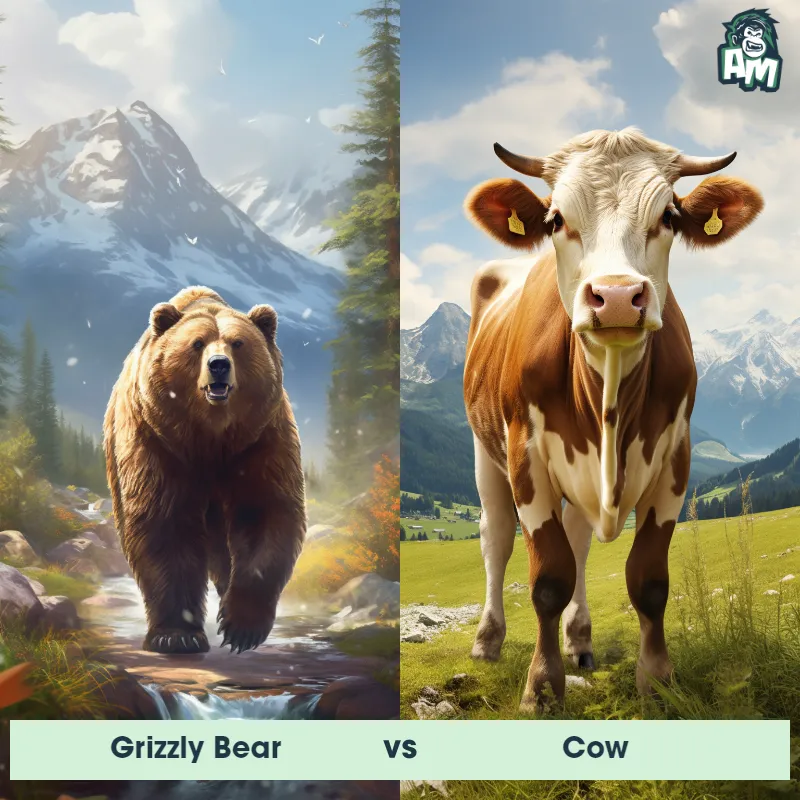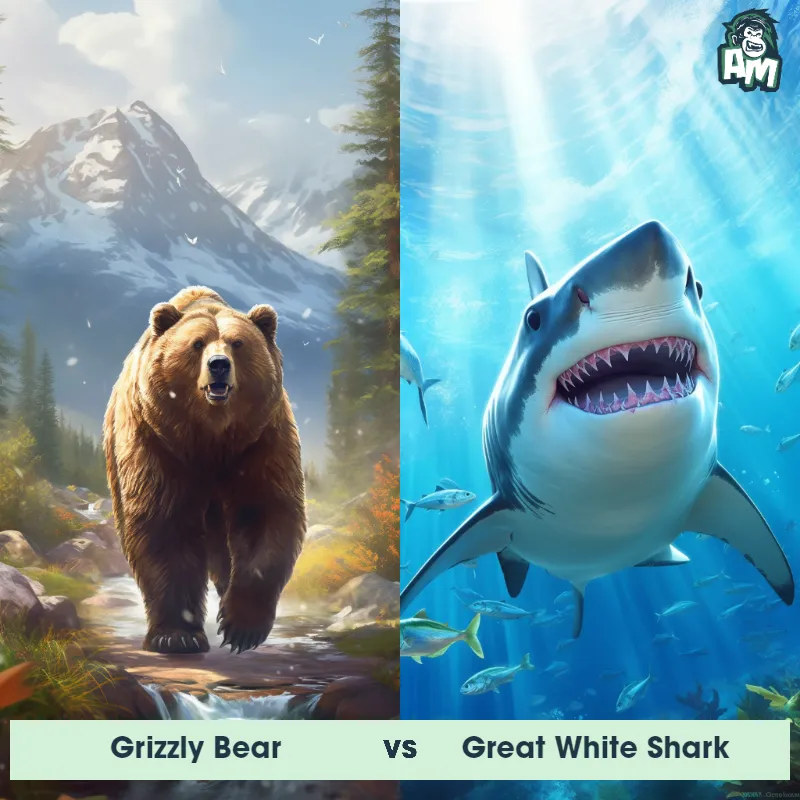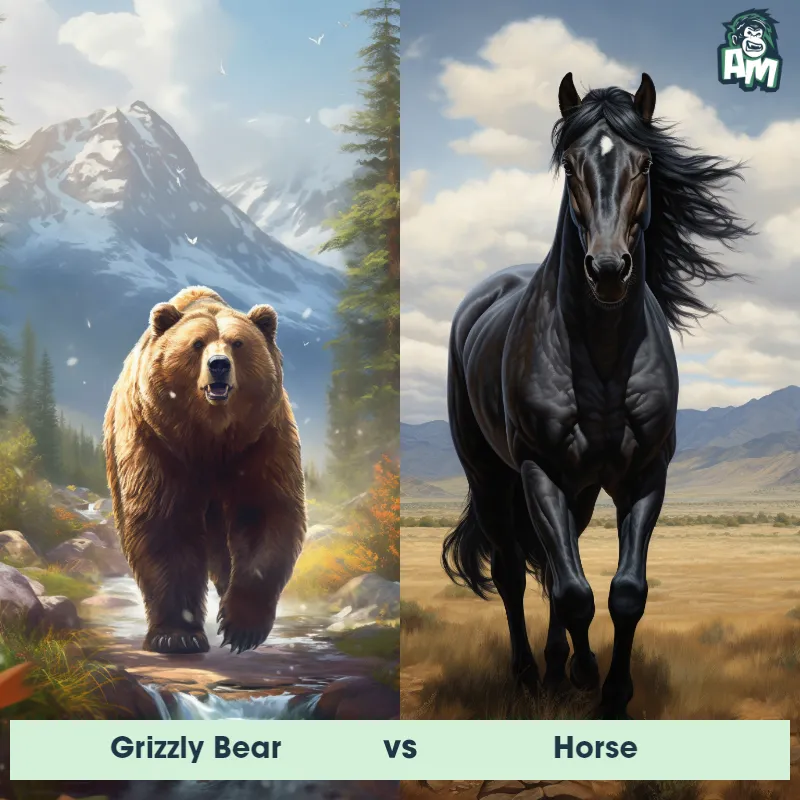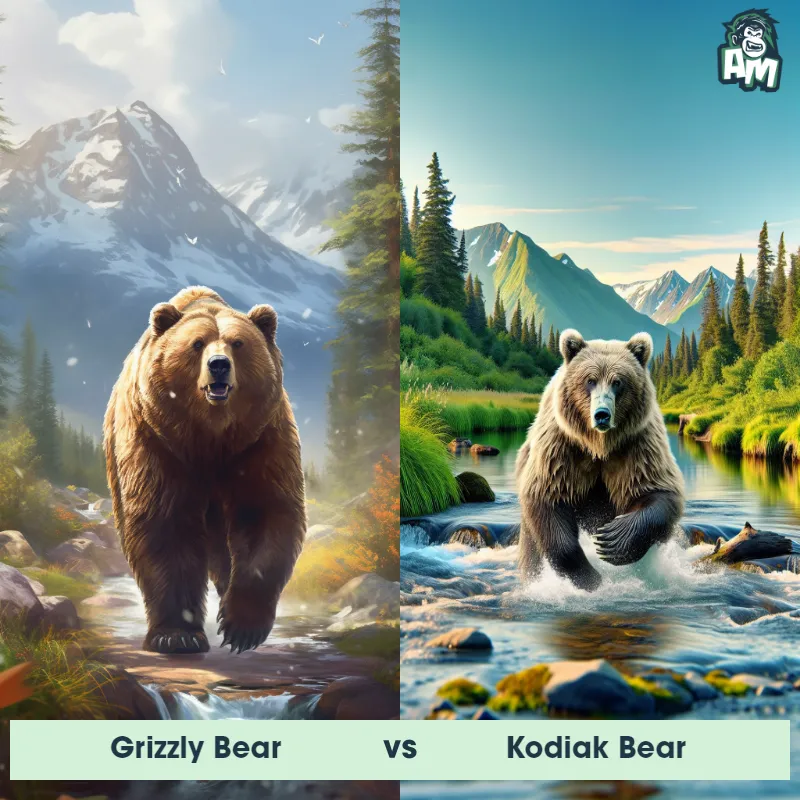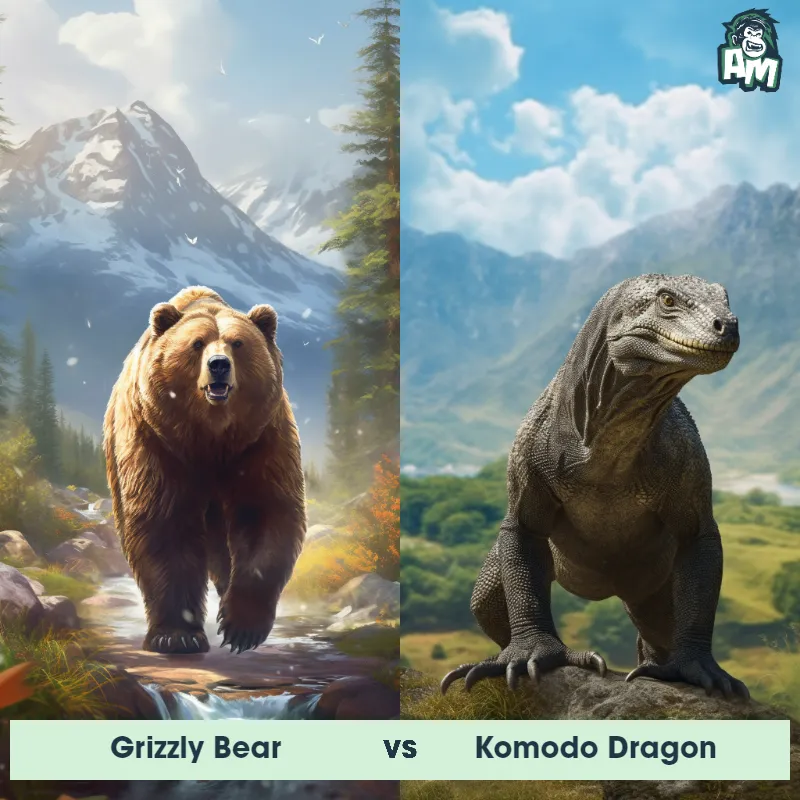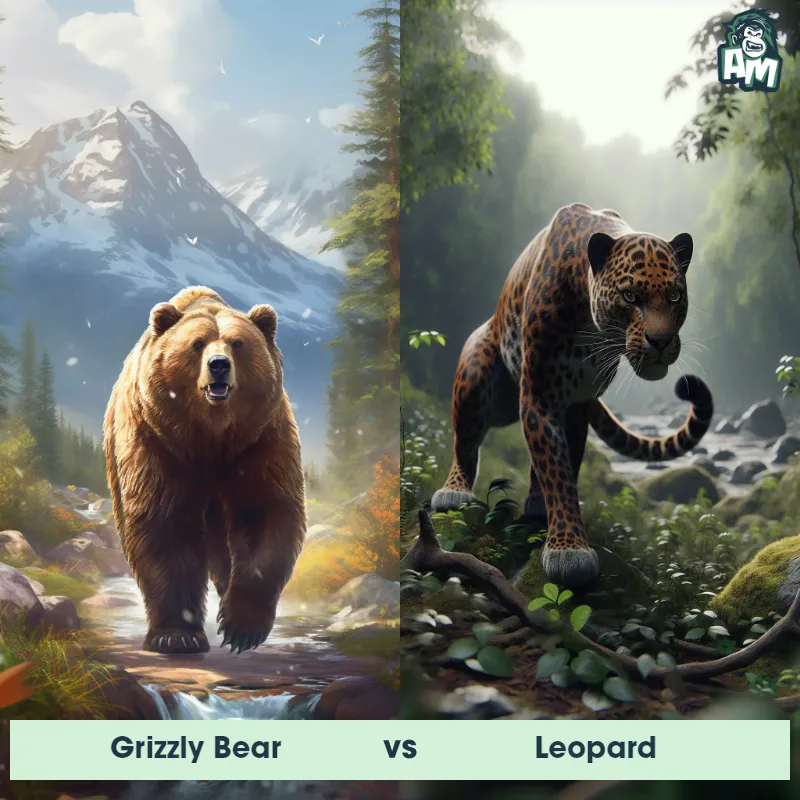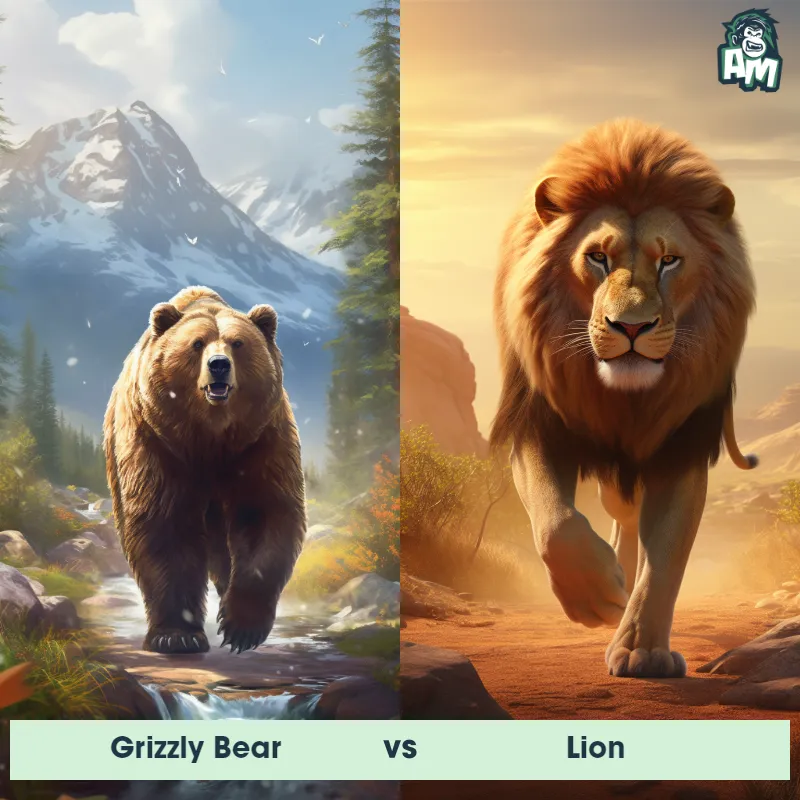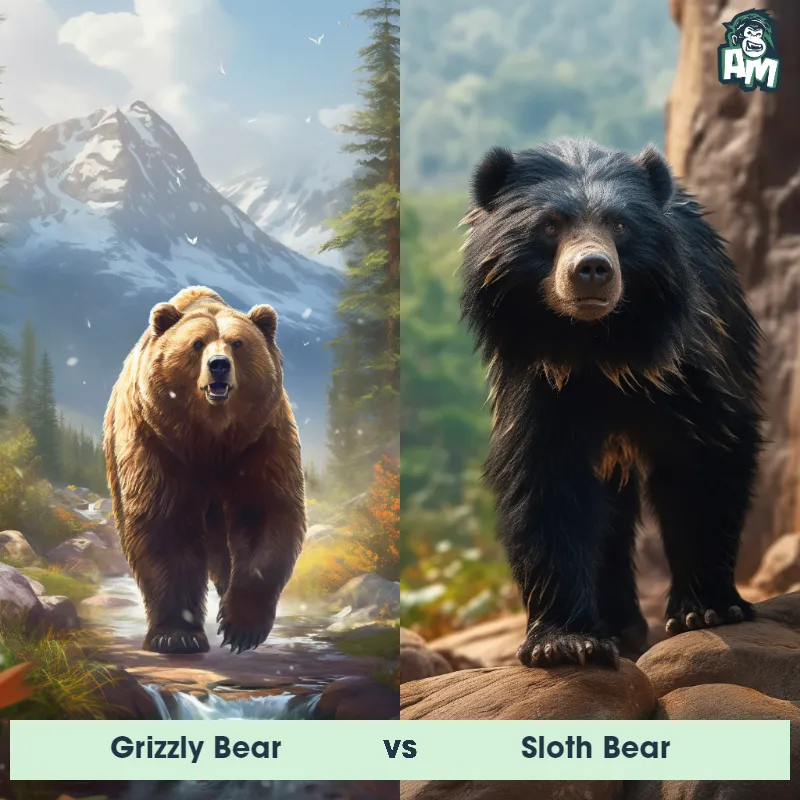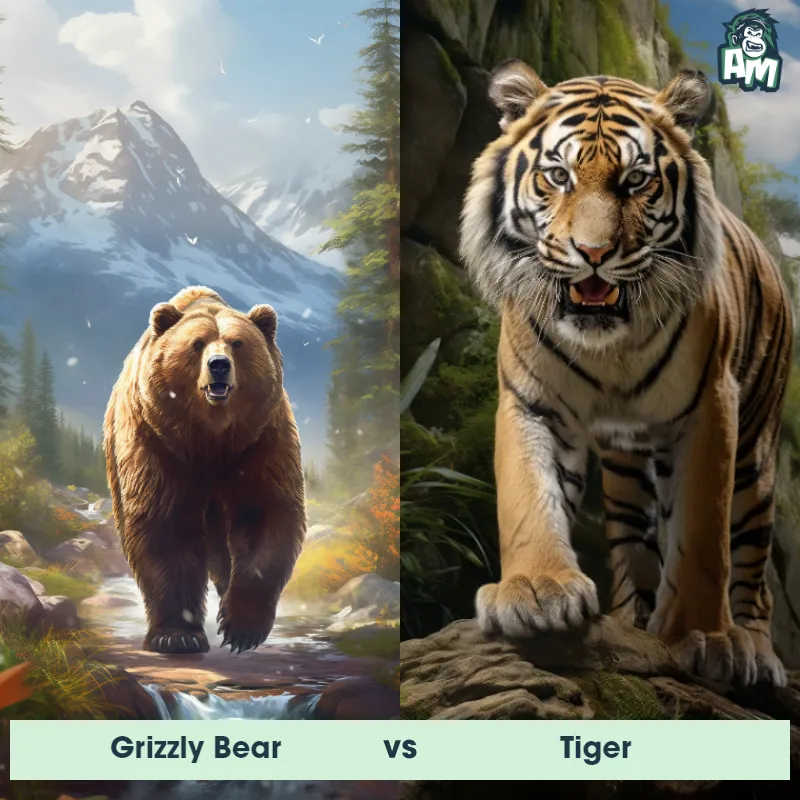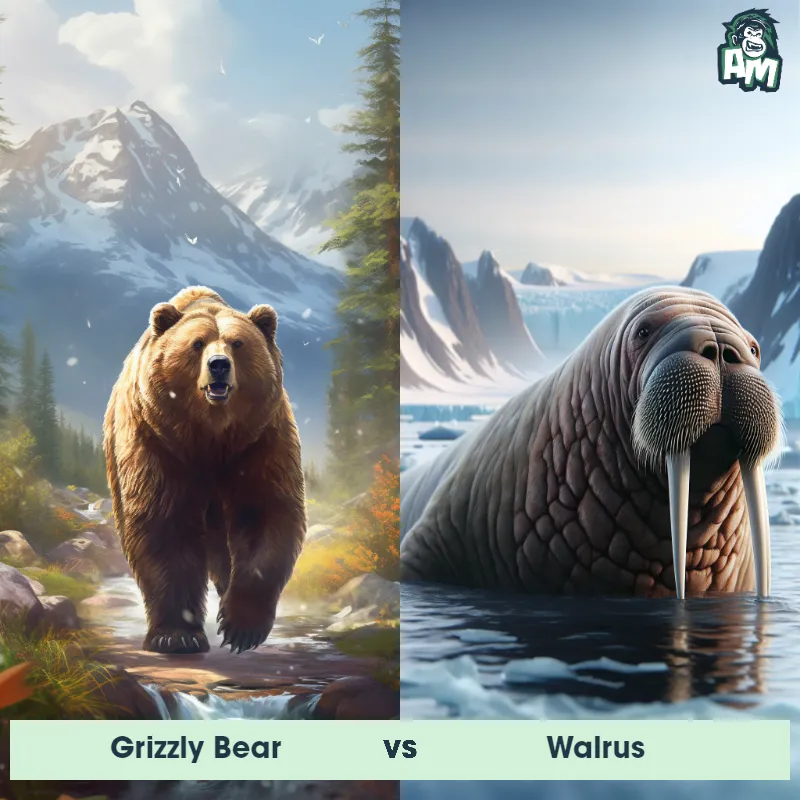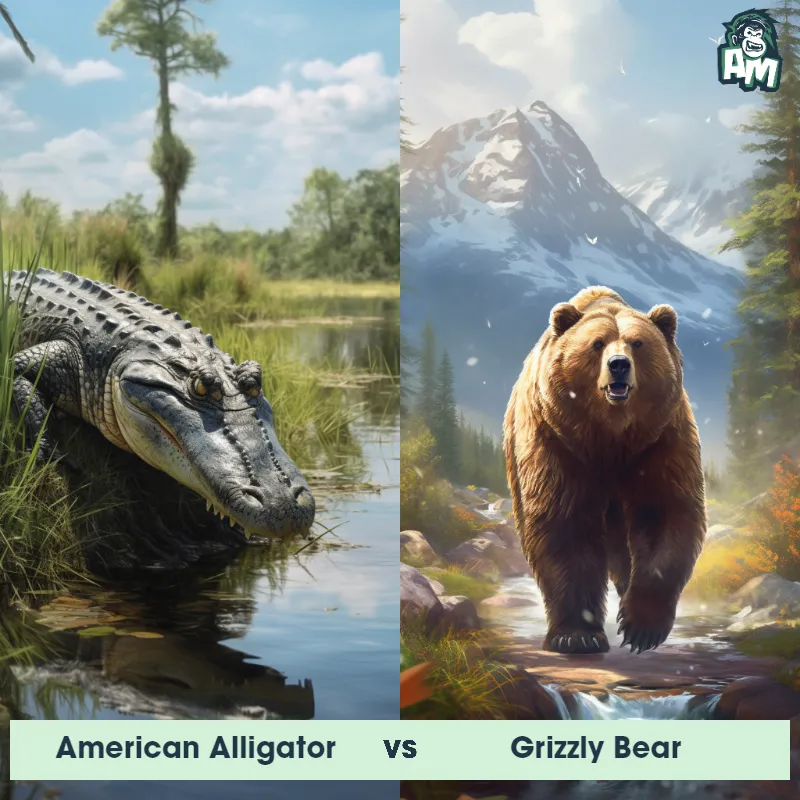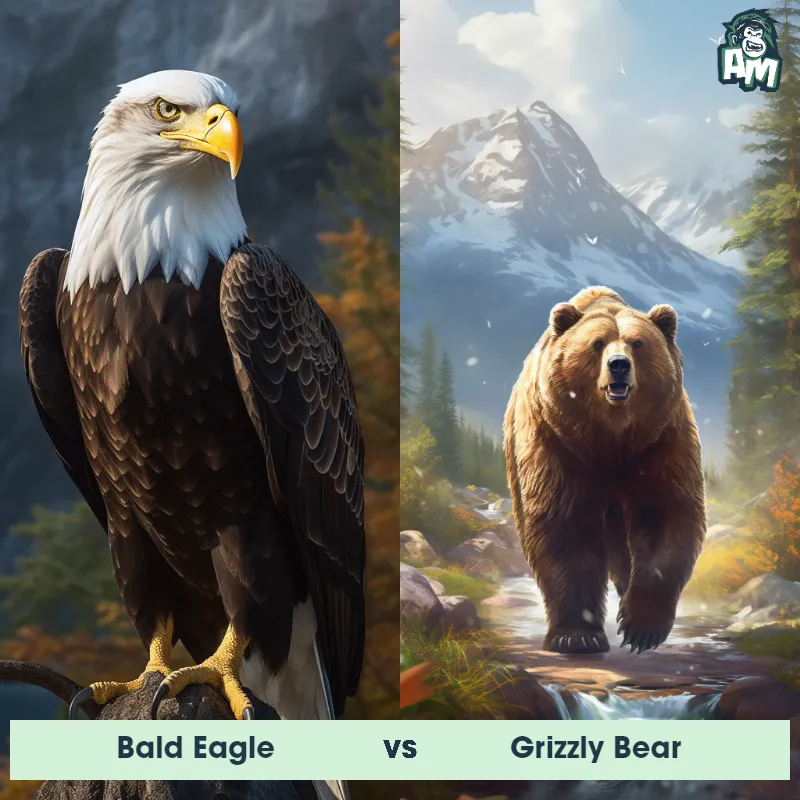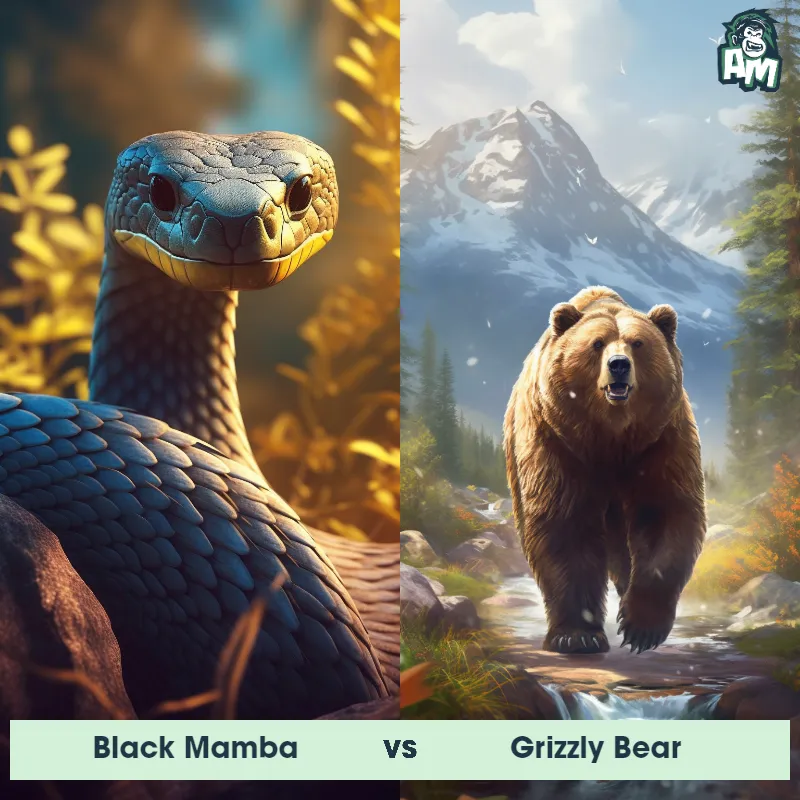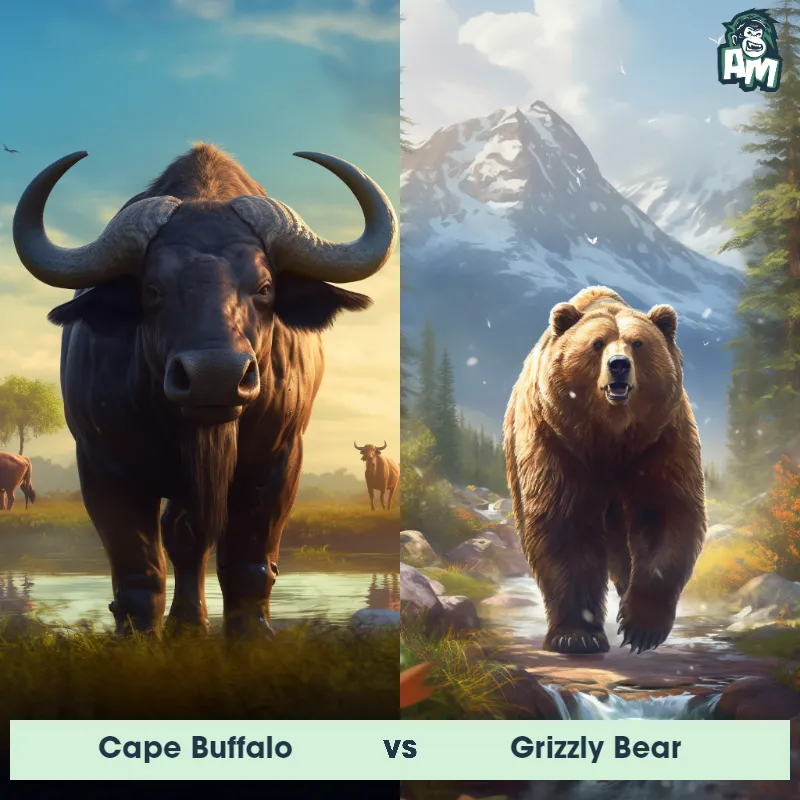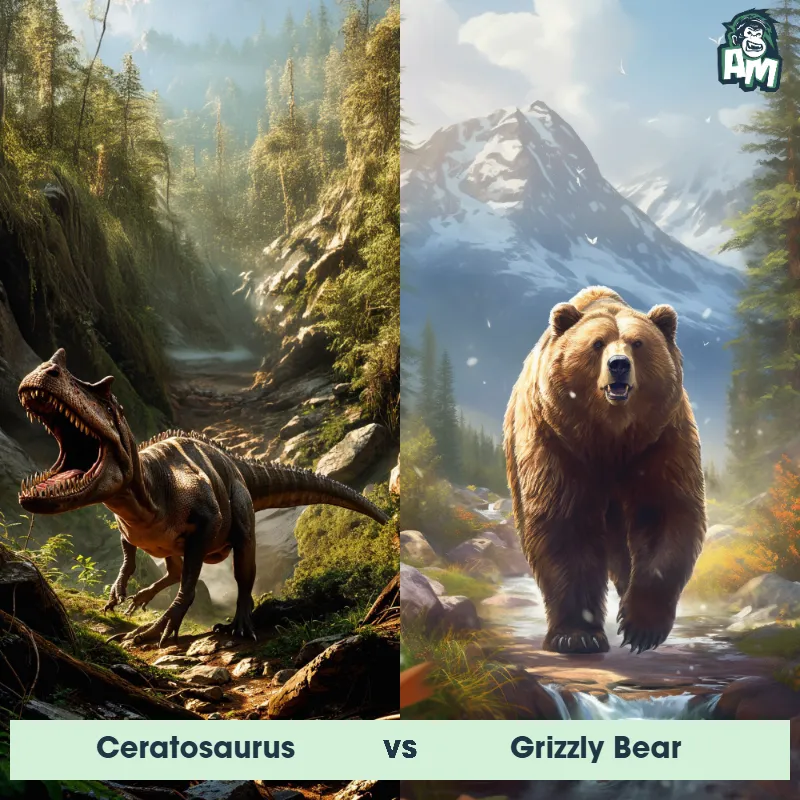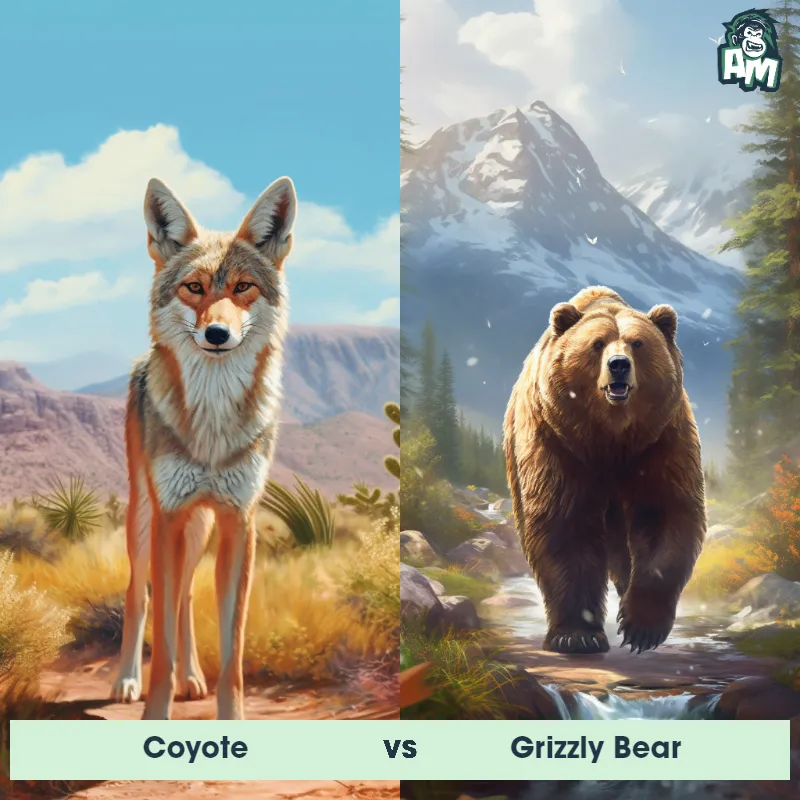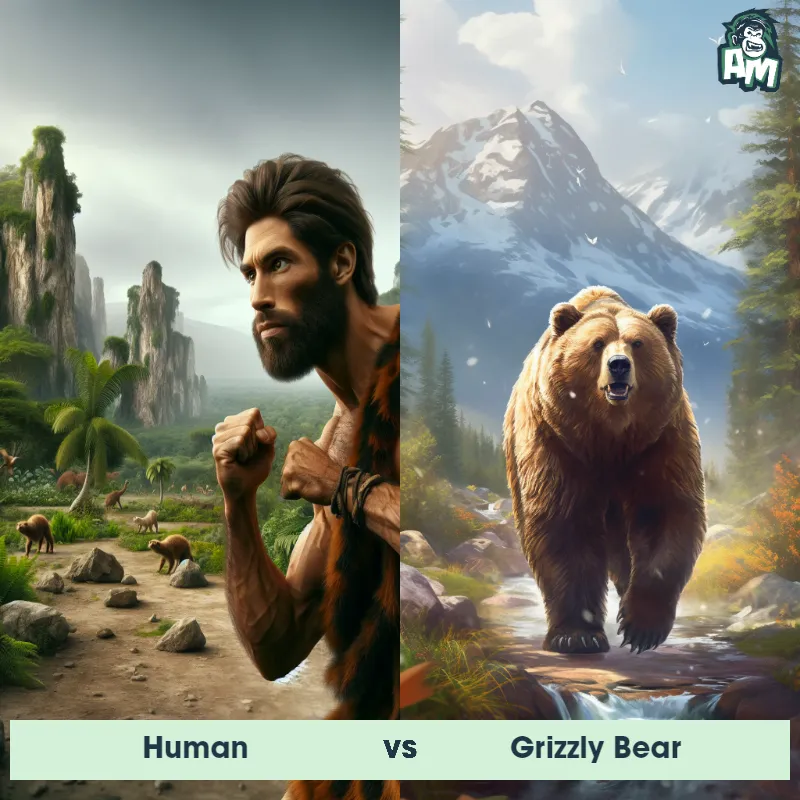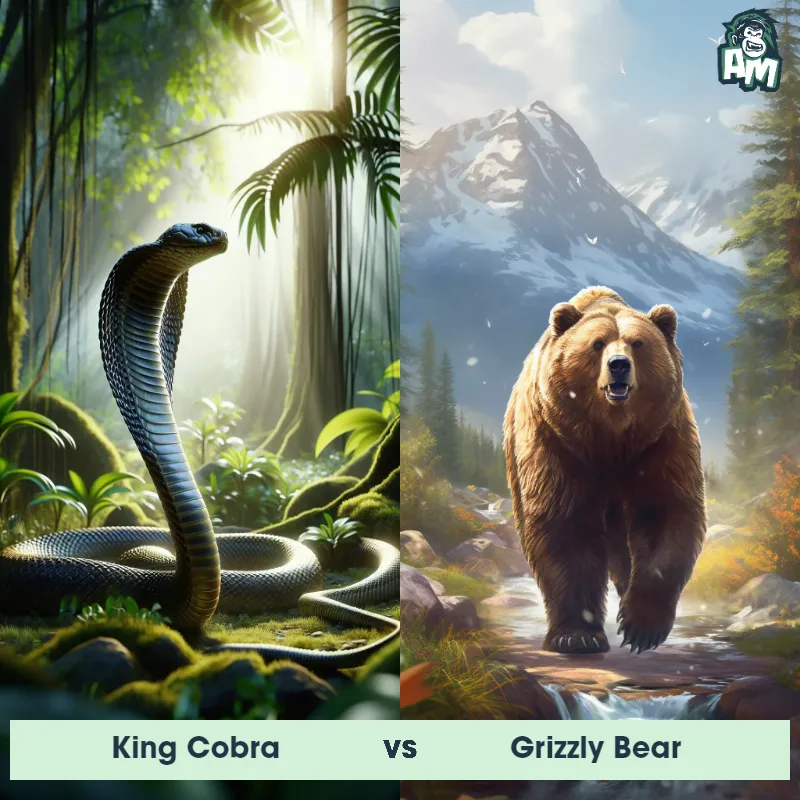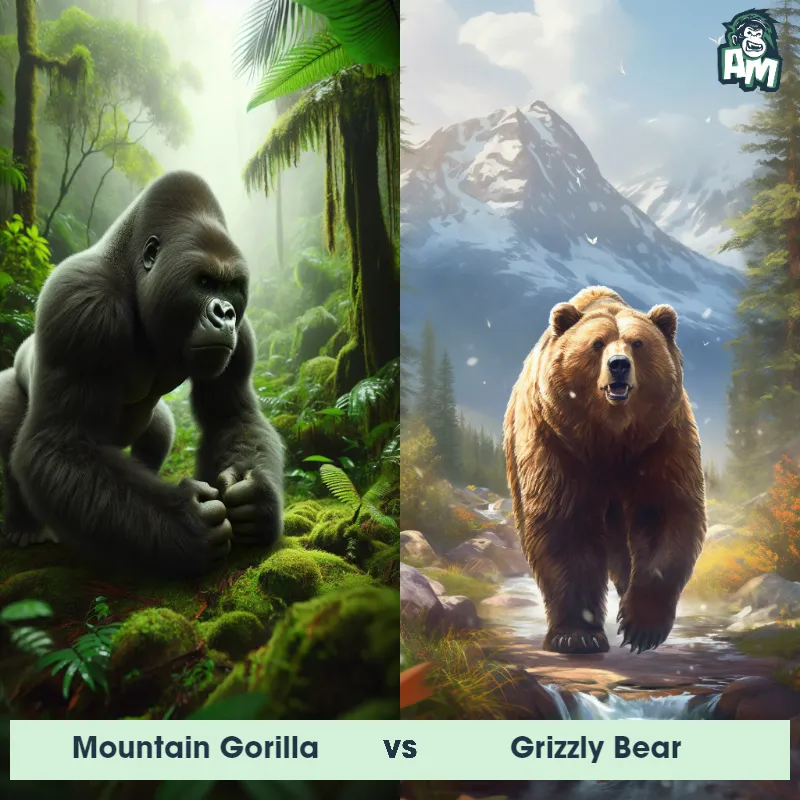The Grizzly Bear
The Grizzly Bear, also known as the North American brown bear, is a large mammal found in North America. They have a distinctive hump of muscle on their shoulders, which sets them apart from other bear species. Grizzly bears are characterized by their powerful built and long curved claws, which they use for digging and hunting. They have a thick fur coat that can range in color from pale yellow to dark brown, and can weigh up to 1,500 pounds, making them one of the largest bear species on the continent. Grizzlies are typically solitary animals, but will gather in areas with abundant food sources, such as rivers during the salmon spawning season.

| Grizzly Bear | |
|---|---|
| Size | Up to 8 feet tall (2.4 meters) |
| Weight | Up to 600 pounds (272 kilograms) |
| Speed | Speed: 30 mph (48.28 km/hr) |
| Key Strength | Powerful jaws and sharp claws |
| Biggest Weakness | Slow movement and vulnerability to attacks from behind |
| Scientific Name | Ursus arctos horribilis |
| Family | Ursidae |
| Habitat | Forests, meadows, and mountains |
| Geography | North America, primarily in Alaska and western Canada |
| Diet | Omnivorous, eats berries, roots, fish, small mammals, and carrion |
| Lifespan | 20 years - 25 years |

The Grizzly Bear
The Grizzly Bear, also known as the North American brown bear, is a large mammal found in North America. They have a distinctive hump of muscle on their shoulders, which sets them apart from other bear species. Grizzly bears are characterized by their powerful built and long curved claws, which they use for digging and hunting. They have a thick fur coat that can range in color from pale yellow to dark brown, and can weigh up to 1,500 pounds, making them one of the largest bear species on the continent. Grizzlies are typically solitary animals, but will gather in areas with abundant food sources, such as rivers during the salmon spawning season.
![[object Object] Gif](https://tenor.com/view/fighting-match-quarrel-brawl-battle-gif-15965644.gif)
Fun Fact: Grizzly Bears are excellent swimmers and can swim for long distances and even cross wide rivers, with their powerful bodies and large front paws acting as paddles.
| Grizzly Bear | |
|---|---|
| Size | Up to 8 feet tall (2.4 meters) |
| Weight | Up to 600 pounds (272 kilograms) |
| Speed | Speed: 30 mph (48.28 km/hr) |
| Key Strength | Powerful jaws and sharp claws |
| Biggest Weakness | Slow movement and vulnerability to attacks from behind |
| Scientific Name | Ursus arctos horribilis |
| Family | Ursidae |
| Habitat | Forests, meadows, and mountains |
| Geography | North America, primarily in Alaska and western Canada |
| Diet | Omnivorous, eats berries, roots, fish, small mammals, and carrion |
| Lifespan | 20 years - 25 years |
Match Highlights
Grizzly Bear Matchups
We use AI to simulate matchups between the Grizzly Bear and other animals. Our simulation considers size, strength, and natural predatory behaviors to determine the most likely outcome.
Grizzly Bear: Diet, Predators, Aggression, and Defensive Behaviors
What do Grizzly Bears eat?
Grizzly Bears are omnivores, which means they have a diverse diet. Their diet primarily consists of plants such as fruits, roots, and berries. However, they also consume insects, fish, and small mammals like rodents. During certain times of the year, Grizzly Bears will feed on larger mammals such as elk or moose.
Do Grizzly Bears have any predators?
Adult Grizzly Bears do not have many natural predators due to their large size and strength. However, younger bears or cubs may fall prey to other apex predators like wolves or mountain lions. In rare cases, adult Grizzly Bears have been known to be killed by other Grizzly Bears in territorial disputes.
Are Grizzly Bears aggressive?
Grizzly Bears are known to be more aggressive compared to other bear species. They are especially protective of their territory and food sources, and will display aggressive behavior if they feel threatened. It is important to give Grizzly Bears a wide berth and avoid provoking them in order to prevent any potential attacks.
Do Grizzly Bears fight?
Grizzly Bears are solitary animals for the most part, but they do engage in fights with other bears, typically of the same sex. These fights are often territorial in nature, as Grizzly Bears have vast home ranges that they defend from other bears. These fights can be brutal and may result in injuries or even death.
How do Grizzly Bears defend themselves?
Grizzly Bears have several mechanisms for defending themselves against potential threats. When feeling threatened, they may exhibit warning signs like growling, huffing, or swatting the ground. If a physical confrontation is inevitable, Grizzly Bears will use their size, strength, and powerful jaws to defend themselves. They may also stand on their hind legs to appear larger and more intimidating.
What is the biggest weakness of Grizzly Bears in a fight?
Despite their formidable size and strength, Grizzly Bears have a vulnerability in their relatively thin skin and fur. A well-placed injury from a predator or another bear can pierce through the bear's skin and cause significant damage. Additionally, Grizzly Bears are not as agile or fast as some of their predators, which can also put them at a disadvantage in a fight.
Fun Fact: Contrary to popular belief, Grizzly Bears are not always brown in color; some individuals can have a lighter or even a white coat, and these are often called "blond" or "golden" grizzlies.
Fun Fact: Grizzly Bears have an extremely powerful sense of smell, which is approximately 100 times better than that of humans, allowing them to detect scents from several miles away and aiding in their ability to locate food, mates, and potential threats.



